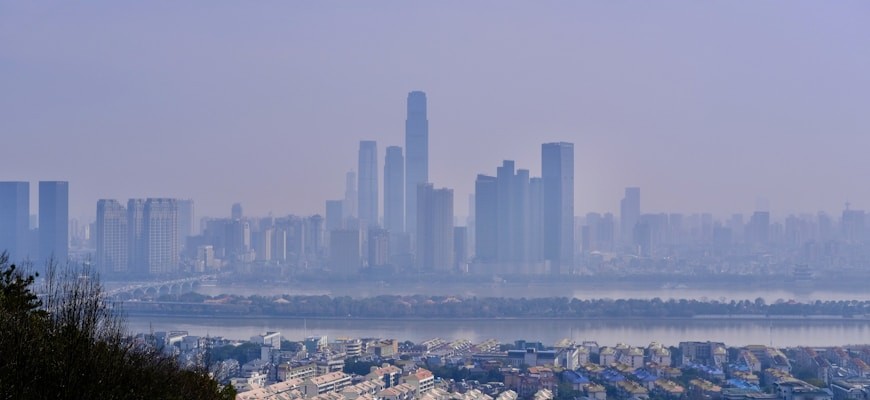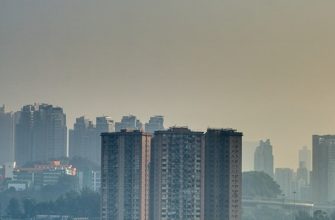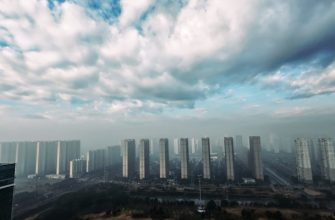- Urban Strategies for Cleaner Air: Innovative Approaches to Pollution Control
- Green Cities: How Urban Areas are Tackling Air Quality Challenges
- From Policy to Practice: Effective Environmental Initiatives in Urban Centers
- Community Engagement: Mobilizing Citizens for Air Quality Improvement
- The Role of Technology in Reducing Urban Air Pollution
- Success Stories: Cities Leading the Way in Air Quality Management
Urban Strategies for Cleaner Air: Innovative Approaches to Pollution Control
In the pursuit of cleaner air, cities worldwide are adopting innovative strategies aimed at reducing pollution levels. These urban initiatives are essential in combating air quality deterioration and fostering healthier environments for residents.
- Green Infrastructure: Cities are increasingly incorporating green roofs, vertical gardens, and urban forests into their designs. These elements not only enhance aesthetic appeal but also act as natural air filters, absorbing pollutants and releasing oxygen.
- Smart Transportation: Promoting public transport, cycling, and walking reduces vehicle emissions. Cities are investing in electric buses and expanding bike-sharing programs to encourage eco-friendly commuting options.
- Air Quality Monitoring: Implementing advanced monitoring systems helps cities track pollution sources. Real-time data allows for timely responses to air quality issues and informs citizens about pollution levels.
- Regulatory Measures: Stricter regulations on industrial emissions and vehicle standards are essential in reducing urban pollution. Cities are enforcing limits on harmful emissions and promoting cleaner technologies.
- Community Engagement: Involving citizens in air quality initiatives fosters a sense of responsibility. Educational campaigns and community clean-up events empower residents to contribute to cleaner air efforts.
These urban strategies for cleaner air illustrate a comprehensive approach to pollution control. By integrating innovative solutions, cities can effectively tackle the challenges of air quality and promote sustainability for future generations.
Green Cities: How Urban Areas are Tackling Air Quality Challenges
As urban areas expand, addressing air quality challenges has become a crucial task for cities worldwide. Various ecological initiatives are being implemented to combat pollution and improve the overall environment. Cities are adopting innovative strategies to enhance air quality and promote greener living.
- Green Spaces Development: Urban planners are prioritizing the creation and maintenance of parks and green belts. These areas not only provide recreational spaces but also help in filtering pollutants from the air, contributing to cleaner urban environments.
- Public Transportation Improvements: Enhancing public transit systems reduces the number of vehicles on the road, consequently decreasing emissions. Cities are investing in electric buses and trains to promote sustainable travel options.
- Emission Regulations: Stricter regulations on industrial emissions and vehicle exhaust are being enforced. These policies aim to lower the overall air pollution levels and ensure healthier living conditions for residents.
- Community Engagement: Involving the community in air quality initiatives is vital. Educational programs and local campaigns raise awareness about pollution sources and promote sustainable practices among residents.
- Smart Technology Integration: Utilizing smart technology to monitor air quality in real-time allows cities to respond promptly to pollution spikes. This data-driven approach aids in implementing effective measures to protect public health.
These initiatives reflect a commitment to fostering sustainable urban environments. By focusing on improving air quality, cities can ensure a healthier future for their inhabitants and contribute to global ecological well-being. Such actions not only enhance the quality of life but also support the fight against climate change, making cities greener and more livable.
From Policy to Practice: Effective Environmental Initiatives in Urban Centers
Urban centers face significant challenges in maintaining clean air as pollution levels rise. To combat this issue, various effective environmental initiatives have been implemented across cities, translating policies into actionable practices. These initiatives focus on reducing emissions, promoting sustainable transportation, and enhancing green spaces.
- Emission Reduction Programs: Many cities have adopted stringent regulations to limit industrial emissions, promoting cleaner technologies to improve air quality.
- Sustainable Transportation: Initiatives such as expanding public transport systems, implementing bike-sharing programs, and creating pedestrian-friendly zones are essential for reducing vehicular emissions.
- Green Spaces and Urban Forestry: Increasing the number of parks and planting trees contribute to better air quality by absorbing pollutants and providing shade, which helps lower urban temperatures.
- Awareness Campaigns: Educational programs aimed at residents encourage eco-friendly practices, such as reducing waste and using energy-efficient appliances, further supporting clean air initiatives.
- Collaboration with Local Businesses: Partnerships with businesses promote sustainable practices, such as reducing packaging waste and transitioning to renewable energy sources.
By implementing these effective environmental initiatives, urban centers pave the way for cleaner air and a healthier living environment. Continuous assessment and adaptation of these practices are crucial for success, ensuring that cities remain committed to improving air quality for all residents.
Community Engagement: Mobilizing Citizens for Air Quality Improvement
Community engagement plays a crucial role in the fight for cleaner air in urban environments. By mobilizing citizens, cities can foster a sense of responsibility and awareness regarding air quality issues. Engaging local communities not only enhances public participation but also drives collective action towards improving environmental conditions.
Various strategies can be employed to effectively mobilize citizens for air quality improvement:
- Awareness Campaigns: Informing residents about the sources and effects of air pollution helps in creating a knowledgeable community that understands the importance of air quality.
- Workshops and Seminars: Organizing educational events empowers citizens to take action, providing them with tools and knowledge to combat air pollution.
- Incentive Programs: Offering incentives for participation in air quality initiatives, such as rewards for reducing car usage or adopting green practices, encourages community involvement.
- Collaboration with Local Organizations: Partnering with NGOs and local groups can amplify the impact of initiatives aimed at enhancing air quality, as these organizations often have established networks and resources.
Furthermore, involving citizens in air monitoring efforts allows them to contribute directly to tracking pollution levels. This hands-on approach not only builds community spirit but also provides valuable data that can inform local policymakers. By fostering a culture of engagement, cities can create a united front against air pollution, ultimately leading to sustainable improvements in air quality.
In conclusion, mobilizing citizens is essential for the success of air quality initiatives. By leveraging community engagement, cities can enhance their efforts to combat air pollution, ensuring a healthier environment for all residents. As urban areas continue to grow, the need for active participation in air quality improvement becomes even more critical.
The Role of Technology in Reducing Urban Air Pollution
Technology plays a pivotal role in the ongoing battle against urban air pollution, providing innovative solutions that cities can implement to improve air quality. As urban areas continue to expand, the need for effective pollution control becomes paramount. Advanced technologies contribute significantly to monitoring and reducing harmful emissions, ensuring healthier living environments for residents.
- Air Quality Monitoring Systems: Automated sensors and real-time data analytics allow cities to track pollution levels accurately. This information helps in creating targeted strategies for reducing emissions.
- Electric and Hybrid Vehicles: The adoption of electric and hybrid transportation options reduces reliance on fossil fuels, leading to a significant decrease in urban air pollution.
- Smart Traffic Management: Implementing smart traffic systems can optimize vehicle flow, reducing congestion and minimizing the emissions produced by idling engines.
- Renewable Energy Sources: Transitioning to solar, wind, and other renewable energy sources lowers the carbon footprint of urban areas, contributing to cleaner air.
- Green Infrastructure: Incorporating green roofs, urban forests, and parks into city planning not only beautifies urban spaces but also helps absorb pollutants and improve air quality.
By leveraging these technological advancements, cities can take significant strides towards combating air pollution. The integration of these solutions fosters a sustainable urban environment, where clean air becomes a reality rather than a distant goal. Continuous innovation and investment in eco-friendly technologies ensure that urban centers can effectively manage and reduce air pollution levels, ultimately enhancing the quality of life for all residents.
Success Stories: Cities Leading the Way in Air Quality Management
Many cities around the world are taking significant steps to improve air quality through innovative environmental initiatives. These efforts not only enhance public health but also contribute to sustainable urban development. By implementing effective air quality management strategies, these cities serve as models for others looking to combat pollution.
- Amsterdam, Netherlands: Known for its extensive cycling infrastructure, Amsterdam has prioritized reducing vehicular emissions. The city has implemented low-emission zones and increased green spaces, significantly improving air quality.
- Los Angeles, USA: Once notorious for smog, Los Angeles has made remarkable strides in air quality management. The city has invested heavily in public transportation and adopted stricter emission standards, resulting in cleaner air.
- Beijing, China: Faced with severe air pollution challenges, Beijing has introduced measures such as banning coal burning and promoting electric vehicles. These initiatives have led to a noticeable improvement in air quality levels.
- London, UK: London has implemented an Ultra Low Emission Zone (ULEZ) to reduce air pollution from vehicles. This initiative has successfully decreased harmful emissions and improved air quality for residents.
- Copenhagen, Denmark: As a leader in sustainability, Copenhagen focuses on enhancing air quality through a comprehensive approach that includes promoting cycling and investing in renewable energy sources.
These cities exemplify how strategic air quality management can lead to a healthier urban environment. By adopting innovative policies and engaging the community, they pave the way for a cleaner future. The success stories of Amsterdam, Los Angeles, Beijing, London, and Copenhagen demonstrate that with commitment and action, cities can effectively combat air pollution and improve the quality of life for their residents.








